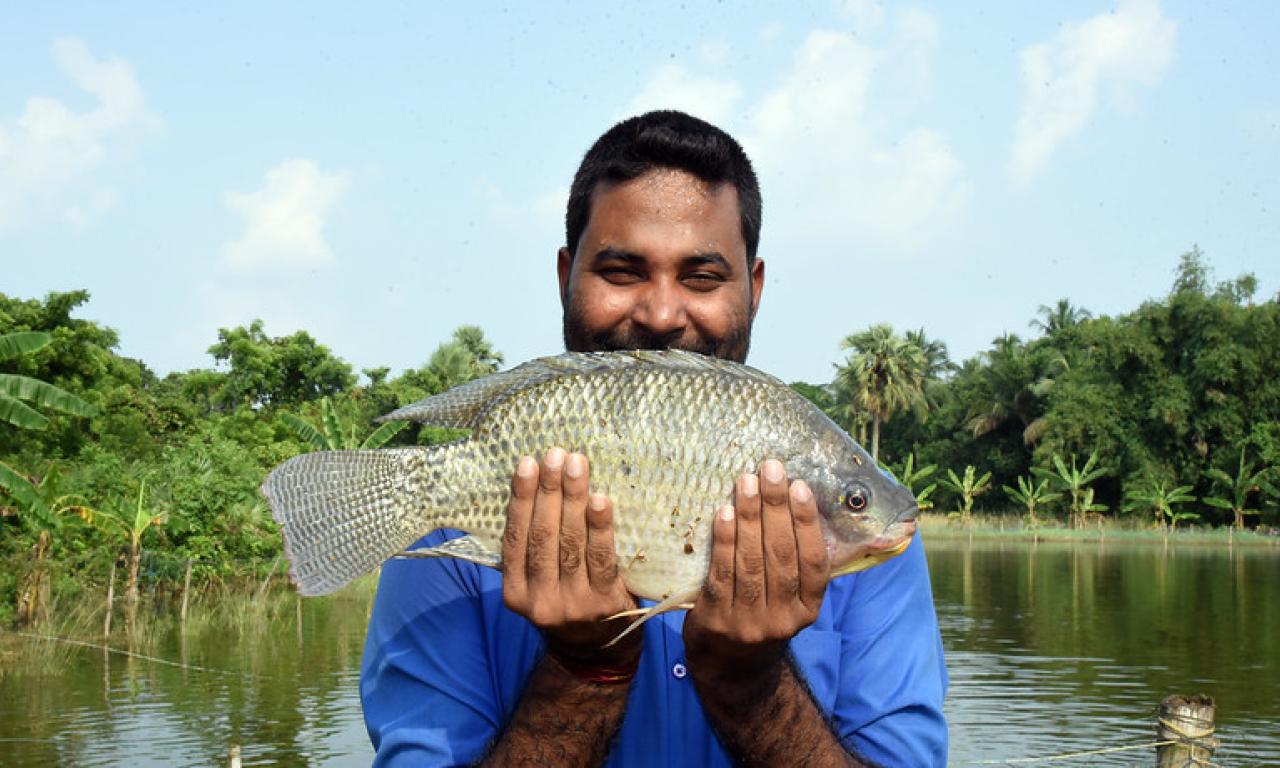
Researchers identified a region of the Nile tilapia genome associated with viral resilience, which can be used to support the breeding of disease-resistant fish.
The possibility of breeding tilapia that are resistant to tilapia lake virus (TiLV) is one step closer, thanks to a genomic research breakthrough.
Nile tilapia is one of the most commonly farmed fish species in the world, and its value is estimated to be around USD10 billion. However, both wild and farmed tilapia are susceptible to highly-infectious diseases, particularly TiLV. The viral pathogen spreads between live animals and has up to a ninety percent mortality rate, leading to millions lost in annual revenue and wasted nutrients.
A groundbreaking new study, led by the Roslin Institute and WorldFish, has identified a region in the genome of Nile tilapia that has a major impact on TiLV mortality levels.
In the study, scientists analyzed the genome of almost 1,000 fish from a pond that had experienced an outbreak of TiLV. Comparing the genomes of fish that survived the outbreak with fish that did not enabled scientists to find the region in the genome containing variants associated with survival.
Fish with specific genetic variations on the chromosome Oni22 were substantially less likely to die than fish that lacked variation. Researchers observed a natural TiLV outbreak in a pond and found survival rates of the variant-carrying tilapia were 32 percent higher.
Selective breeding programs, similar to the ongoing one for Genetically Improved Farmed Tilapia at WorldFish, can now be instituted to produce more disease-resistant tilapia strains. Resilient tilapia would be selectively bred to produce offspring that have a higher chance of carrying the alleles that increase survival.
“This information will be invaluable in creating resilient tilapia breeds that can help maintain fish production in the face of disease risks, which threaten food security in many parts of the world. WorldFish plans to incorporate TiLV resistance into new strains of GIFT,” said co-author John Benzie, sustainable aquaculture lead for the CGIAR Research Program on Fish Agri-Food Systems (FISH).
Improving resistance to infectious diseases via selective breeding has major potential to prevent future outbreaks, improve the sustainability of production and strengthen food and nutrition security.
“Tilapia lake virus can cause mass mortality to farmed Nile tilapia, which has major negative impacts for farmers and food security in many countries. Our results provide a clear route to selecting fish with improved genetic resistance to TiLV, with major potential to help tackle this devastating virus,” said Ross Houston, from Roslin Institute.
“Breeders will be able to select the best candidates for resistance to tilapia lake virus by marker-assisted selection, generating new strains of Nile tilapia with enhanced resistance. Interestingly, we also showed that this selection won’t have any negative impact on the fish harvest weight,” added his colleague, Agustin Barria.